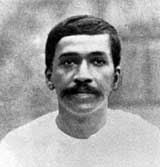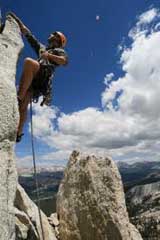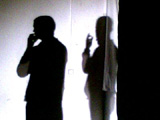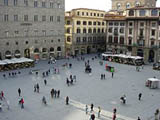Inner approach to health
Foothills to equality
Editor’s note
Equality is one of the chief foundations of spiritual life, especially one turned towards earth and action. Its role in everyday living is however often understated. To begin with, it is one of the best safeguards against those emotional and other reactions that arise in us in response to the challenges of life, including states of illness, suffering and pain. However, like most spiritual and yogic terms, equality also is a much misunderstood term, the confusion ranging from inaction and inertia to indifference and even complacency. This article explores the different aspects and dimensions of this psychological (and indeed physical) condition and discusses the processes that help us achieve it.
Reaching a state of perfect equality or samatā can be a long process. Getting there can undoubtedly take many lives of spiritual endeavour. In Sri Aurobindo’s words:
“Not to be disturbed by either joy or grief, pleasure or displeasure by what people say or do or by outward things is called in yoga state of samatā, equality to all things (1).”
Sri Aurobindo describes equality as the “very first necessity to spiritual perfection (2).” It is a sublime spiritual state but also clearly a supreme psychological poise. Indeed, it is proof that yoga is essentially a psychological process. At its culmination, equality spreads over the entire range of our being, right down to the body. So the ability to absorb and withstand every impact and respond equally to each influence is an indispensable tool for living itself. It is a gradual transition: we grow in equality and as we grow, we clothe ourselves in stronger armour. At first, I guess, the necessity for equality is really a matter of defence: it stops us bruising too easily. But as we move forward, we begin to see that equality is truly a supremely positive state; it is neither dry nor flat because at the end of the road, this armour transforms to Delight. We will experience that truth in everything. This is what Sri Aurobindo terms a state of ‘glad acceptance’:
“Then we are at last capable of receiving all contacts with a blissful equality, because we feel in them the touch of the imperishable Love and Delight, the happiness absolute that hides ever in the heart of things. The gain of this culmination in universal and equal rapture is the soul’s delight and the opening gates of the Bliss that is infinite, the Joy that surpasses all understanding (3).” Clearly it is not a prize won easily, but in our search for integral health, the journey can almost become an end in itself — we find that by just walking the path it expands us more and more. So I can’t really conceive of a surer way of realising true wholeness than the cultivation of equality.
We all know that it can be a long climb to this lofty summit. As our spirit grows in stature we somehow find better ways of accommodating life’s swings of fortune. When we orientate ourselves inside, things have a way of finding a truer proportion. However, the Integral Yoga gives us a decisive chance to settle more promptly onto higher ground. It is a journey to true serenity but it is no easy path. True progress often has a way of exacting a heavy toll. That is probably because no aspect of our being is ever left untouched. Our entire nature, not least the body, moves within the orbit of transformation and there are parts that simply do not want to change. There are no short-cuts or instant panaceas: the whole must be addressed and made equal so that the whole can eventually become one. It is a detailed course and nothing can be left behind. Because of this, it is partly an unfolding in time and partly a result of our collaboration.
As we climb, we all have to cross certain foothills before we can even contemplate breathing the rarefied air of the summits above. These foothills seem to me landmarks in our ascent. There is a great deal of preparatory work to reach the state of equality and many of these gradients seem to relate specifically to our individual nature, while others are more general to mankind itself.
Moving to higher ground
The priority for most people, when engaging on a path of growth, is to raise their level of consciousness rather than establish it on an equal footing. But in truth, I believe that the two movements can unfold side by side. Like climbing a peak, a mountaineer always secures himself to the rock on each assault. One rises in consciousness and then, at the summit, aims to pitch camp. But consolidation can also happen after every step. For most though, the reality can bring frightful dips and hollows; bold ascents are often followed by alarming plummets to the ground. Every advance we make seems to be dogged by the prospect of slipping back; one hasty reaction can undermine much painstaking work. It is fruitful to ask just why this happens. One major reason must surely be that perennial rift that exists between soul and nature. Our soul might frequently soar but our nature invariably lags far behind. It is the anchor which ties us down. It too must learn to fly. The soul is always unaffected by outside intrusions. So can a way be found to immunise the nature too? Climbing in consciousness is rarely a smooth and uninterrupted process but it certainly should be and that entails a singular discipline and practice. Meditation techniques have even been devised to enhance it and the practice of yoga certainly aims to make our passage upwards more even and steady.
It is also necessary in the Integral Yoga to rise in consciousness and build a solid station after each ascent. But from that point, a unique movement takes place. Instead of remaining static in this new poise, the light and force attained from these levels are then directed down to the lower parts. It is a dynamic process, one of descent, and each time we do this, our nature below rises to a new frequency and vibration. This is what we call the Mother’s Work and it unfolds through the agency of our consciousness. Each new station must be repeatedly stabilised through patient and persistent practice. In time, we find it beginning to even ‘equalise’ our nature. The impossible begins to happen and something actually starts to shift inside us. We become gradually less vulnerable to those shocks and diversions that come from outside. Ultimately, I feel that it is the only way our nature can ever be changed. Finally, our nature must be lifted to the very height of the soul because the goal of Transformation, in my eyes, is to make these two sides one. The soul is our pioneer: I believe that if invited, it is only too happy to lead the way. Mind, life and body, if they manage to incline a little towards her, can then become harmonised by the radiance of the soul. I guess that when soul and nature finally find themselves sharing common ground, true equality is reached.
Small beginnings
For me, the key lies in consciousness: I need to be aware of my inner movements. Indeed, as the Mother says, “To perfect oneself, one must first become conscious of oneself (4).” The first thing we notice is probably the noise inside our head. We might find it very crowded there. So we try to quieten our mind: we don’t need judge and jury; we just have to see things as they are. If we disinterestedly watch things unfold,a radical shift very often occurs inside. We not only see what is happening but we actually witness change. It is usually a simultaneous process. This is due to the Force which invariably accompanies consciousness. It brings the first sign of harmonisation.
I believe that it is good to practise an inner state of calm. We need to be balanced at all times, particularly when a major crisis or difficulty arises. At times like these, this state is a priceless asset. Otherwise, we may frequently find ourselves getting engulfed by a difficulty and may even completely lose our station.
But we can certainly use those quieter moments to build a solid foundation. Circumstances may be out of our hands but, when possible, I have found it prudent to move forward in gradual stages. When engaged in a simple physical activity for instance, we can observe just how calm our poise is. It may even be empty of true substance. If this happens, it will create a vacuum for all sorts of debris to enter. Occasionally, when I am performing an ordinary task, my consciousness will go onto auto-pilot and have a tendency to sink. I want the chore to go away so that I can get on with more important business. It is helpful to observe this trend. The poise must be present at all times and no detail is unimportant. Every moment is priceless if we learn to live in the eternity of the second. Any instant can be seized to raise our platform to equality.
When we observe, we usually notice at least a ripple; it is rarely a static picture. These eddies come and go, sometimes provoked by a trigger from outside. We simply watch and let them go. It’s really all we can do, but ultimately it has immense power. Now and then a minor disturbance may arise and if our gaze is at hand the moment it comes it dissolves immediately. The light also can tell us why it arose in the first place. This is the power consciousness brings: one of true knowledge.
The entire process asks for a great deal of patience. It is never-ending work. But we can discover a joy in being more conscious: really, it defies definition. This sense of joy is perhaps a sure sign that one has moved an inch or two closer to our chosen summit.
The witness
In time, as we watch and grow, we become aware of something calm and impassive inside us that just watches. It doesn’t engage in the drama; it sits above and observes. Sri Aurobindo writes:
“There is a stage in the sadhana in which the inner being begins to awake. Often the first result is the condition made up of the following elements:
1. A sort of witness attitude in which the inner consciousness looks at all that happens as a spectator or observer, observing things but taking no active interest or pleasure in them.
2. A state of neutral equanimity in which there is neither joy nor sorrow, only quietude.
3. A sense of being something separate from all that happens, observing it but not a part of it (5).”
So I found that the first necessity was to try to raise myself up to this new state. At certain times, I have tried to identify with this witness poise. With a little aspiration, it is certainly something that can be cultivated. To identify, after all, implies oneness with what one beholds. In doing so, one will gradually develop a greater sense of detachment.
“Witness means an observer, someone who looks on and does not act himself. So when the mind is very quiet, one can withdraw a little in this way from circumstances and look at things as though he were a witness, a spectator, and not participating in the action himself. This gives you a great detachment, a great quietude, and also a very precise sense of the value of things, because it cuts the attachment to action. When you know how to do this with yourself, when you can withdraw and watch yourself acting, you learn many things about yourself. When you are all mixed up and take part in the action, you do not observe yourself acting, you don’t know what you are like. But when you draw back and look at yourself, you can perceive many imperfections which you wouldn’t have seen otherwise (6).”
The first stage in this process, I believe, is to learn to draw back from our instruments themselves. One needs to be more equal to whatever lies inside. The realisation that one is not one’s mind, vital or body instils an element of freedom; it is almost the first tentative step to progress. Next, by identifying with this witness, we learn to disentangle ourselves from the play of our nature itself. There is no sense of judgment; we try to keep our station above and simply observe. Aligning ourselves to this silent spectator opens to us the first possibility of true change.
After beginning to detach more from our movements inside, we naturally find ourselves more able to disengage from whatever situations arise from outside. It is just another play of nature after all. The two processes seem to be interconnected and move forward roughly in parallel. This is a central synthesis of the Integral Yoga; our interface outside must also be embraced by an emerging richness from within. Our way to a state of equality can bring a wholeness of experience that ultimately makes us, in Sri Aurobindo’s words, ‘supremely balanced’ and provides a supreme boon to the entire being.
Stepping back
We invariably look to the Mother for practical advice and surely one of the best ways of developing a witness attitude is to cultivate the practice of ‘stepping back’. Time and again, I find it helps me go back and align to my truth; time and again, I am asked to step back from all reaction. Time and again too, I find myself regretting that I have lost an opportunity to step back. It requires an attitude of vigilance. Indeed, we have to learn to step back from all that attracts and repels. We need to source each response from our centre of truth. Moreover, it is very clear that this practice can be adopted for any situation in everyday life:
“Most of you live on the surface of your being, exposed to the touch of external influences. You live almost projected, as it were, outside your own body, and when you meet some unpleasant being similarly projected you get upset. The whole trouble arises out of your not being accustomed to stepping back. You must always step back into yourself — learn to go deep within — step back and you will be safe. Do not lend yourself to the superficial forces which move in the outside world. Even if you are in a hurry to do something, step back for a while and you will discover to your surprise how much sooner and with what greater success your work can be done. If someone is angry with you, do not be caught in his vibrations but simply step back and his anger, finding no support or response, will vanish. Always keep your peace, resist all temptation to lose it. Never decide anything without stepping back, never speak a word without stepping back, never throw yourself into action without stepping back. All that belongs to the ordinary world is impermanent and fugitive, so there is nothing in it worth getting upset about. What is lasting, eternal, immortal and infinite — that is indeed worth having, worth conquering, worth possessing. It is Divine Light, Divine Love, Divine Life — it is also Supreme Peace, Perfect Joy and All-Mastery upon earth with the Complete Manifestation as its crowning. When you get the sense of the relativity of things, then whatever happens you can step back and look; you can remain quiet and call on the Divine Force and wait for an answer. Then you know exactly what to do. Remember, therefore, that you cannot receive the answer before you are very peaceful. Practise that inner peace, make at least a small beginning and go on in your practice until it becomes a habit with you (7).”
The individual
We find these processes bring us toward a major milestone in our progress: defining our individuality. If we’re brutally honest with ourselves, we might find that there is little that we can call our own. Our mind is but a ‘public square’ of random thoughts that throng from outside; our vital nature pushes and pulls us in all sorts of directions: again, often prompted from outside. Our body is just part and parcel of that vast immoveable inconscience. What can we really call our own? Do we truly exist?
We can’t really claim to be living unless this individual is formed. Otherwise we are just a toy of nature. It can take a long time but we need to expand to our utmost before we can offer to the Mother the fruits of our labour1:
“First one must become a conscious, well-knit, individualised being, who exists in himself, by himself, independently of all his surroundings, who can hear anything, read anything, see anything without changing. He receives from outside only what he wants to receive; he automatically refuses all that is not in conformity with his plan and nothing can leave an imprint on him unless he agrees to receive the imprint. Then one begins to become an individuality! When one is an individuality, one can make an offering of it.
For unless one possesses something, one cannot give it. First, one must be, and then afterwards one can give oneself (8).”
This is the central truth which defines each one of us. It is the only part of our being capable of individualising our nature. It is our true person. It brings our innate capacities forward and harmonises them. In doing so too, it also gradually harmonises them with the outside world.
Duality
To be equal means to stand above the realm of duality. So it is not surprising that duality, the very antithesis of spiritual perfection, often rears its head in the early stages of sadhana. I also found its extremes confronted me forcefully in my early practice. When the nature is woken out of its slumber, it is bound to resist. I found it an acid test and I almost felt myself being tossed in different directions. The state of duality can be a formidable obstacle to moving forward and, in my understanding, it is only the light of knowledge that can dispel this block. This is the light of our consciousness. With awareness, I still find myself compelled to cast light over its dark shadows. I have to draw very deeply to reach this light: it needs to be consistently invoked. Over time, it gradually comes forward and can eventually take an executive control over the nature. The Force will invariably penetrate where consciousness directs its light. This is the light of the soul and is also, in my eyes, the light of our truth. Because of this, it has a happy way of reconciling any opposites.
References
1. Sri Aurobindo. SABCL, Volume 23. Pondicherry; Sri Aurobindo Ashram Trust, 1970, p. 839.
2. Op. cit. SABCL, Volume 21. Pondicherry; 1970, Sri Aurobindo Ashram Trust, 1970, p. 671.
3. Op. cit. SABCL, Volume 20. Pondicherry; Sri Aurobindo Ashram Trust, 1970, p. 216.
4. The Mother. Collected Works of the Mother, Volume 4. Pondicherry; Sri Aurobindo Ashram Trust, 1972, p. 34
5. Op. cit. SABCL, Volume 23. Pondicherry; Sri Aurobindo Ashram Trust, 1970, p. 1002.
6. Op. cit. Collected Works of the Mother, Volume 6. Pondicherry; Sri Aurobindo Ashram Trust, 1979, p. 360.
7. Op. cit. Collected Works of the Mother, Volume 3. Pondicherry; Sri Aurobindo Ashram Trust, 1977, p. 160.
8. Op. cit. Collected Works of the Mother, Volume 6. Pondicherry; Sri Aurobindo Ashram Trust, 1979, p. 257.
9. Ibid.
(To be continued)
Mr. James Anderson, a sadhak, is following the Yoga of Sri Aurobindo and working at SAIIIHR, Pondicherry.
Share with us (Comments, contributions, opinions)
When reproducing this feature, please credit NAMAH, and give the byline. Please send us cuttings.








